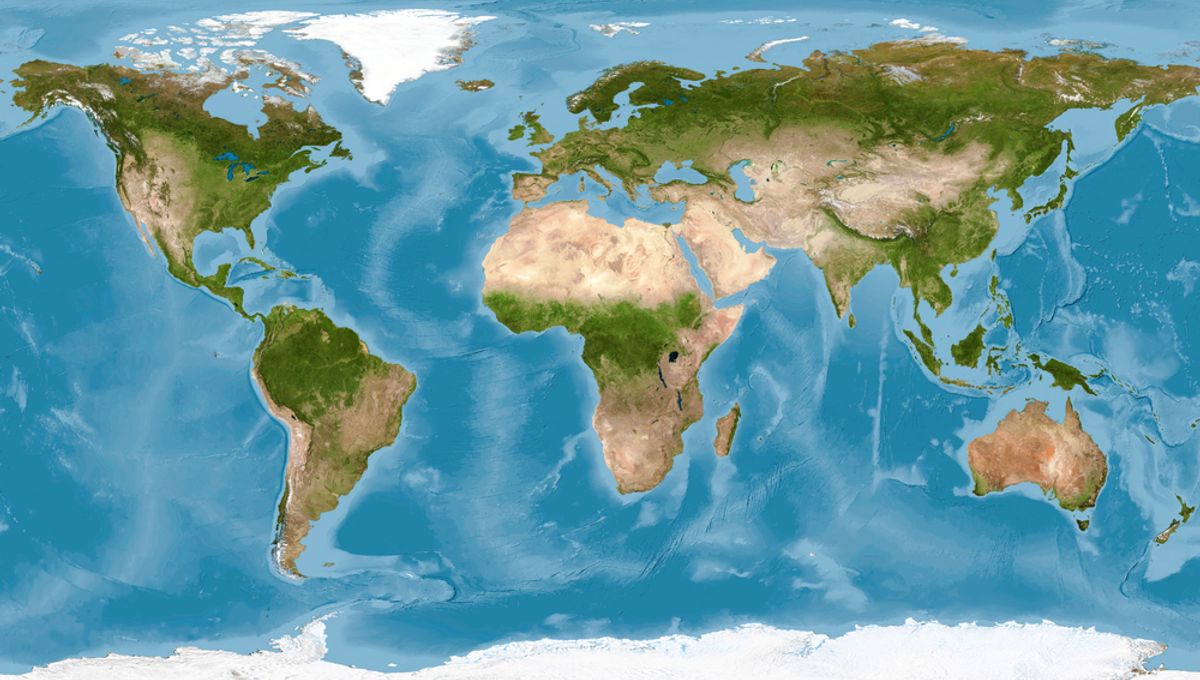
When we hear the phrase “cradle of humanity” – the point in the world from which all human life sprang – there’s one place that usually springs to mind: Africa.
That’s… vague, but not wrong. The group of apes that would eventually become humans first diverged from chimpanzees, our nearest relatives in the evolutionary tree, around six or seven million years ago – and as you might guess from the fact that our hairier cousins still live there, it did indeed occur on the continent of Africa. Specifically, if the results of a 2022 Oxford University study are to be believed, Sudan.
But the story of human evolution certainly doesn’t end there – and, perhaps surprisingly, it doesn’t begin there either. As more and better research and analysis continue to come to light about our ancient origins, the question has to be asked… have we got the “cradle of humankind” all wrong?
Into Africa…
There aren’t many primates foolish enough to live in the colder parts of the world – not much more than those Japanese critters that hang out in hot tubs, and us.
So when you hear that some very serious scientists believe the original apes came from Europe, rather than Africa or Asia or any of those other nice warm places they hang out today, it might sound kind of unlikely.
But that really does seem to be where the evidence points. “Our findings […] suggest that hominines not only evolved in western and central Europe but spent over five million years evolving there,” reported David Begun, professor in the Department of Anthropology in the Faculty of Arts & Science at the University of Toronto, in 2023.
What would become the African apes – and eventually, humans – then “[spread] to the eastern Mediterranean,” he explained, “before eventually dispersing into Africa, probably as a consequence of changing environments and diminishing forests.”
Like most ideas on events from millions of years ago, it’s far from universally accepted – but fossilized remains from the same period found in Greece and the Balkans also seem to support the theory that our most ancient ape ancestors came from what is now Europe, not Africa.
“While the remains of early hominines are abundant in Europe and Anatolia, they are completely absent from Africa until the first hominin appeared there about seven million years ago,” Begun explained.
… and out again
Of course, having finally made it into Africa, it was smooth sailing from then on, right? Just a few million years’ evolution into Homo sapiens, and then back out we went?
Well, no – not even close. And for evidence of that, we need only look at some of our most misunderstood ancestral relatives: the Neanderthals.
Why? Because Neanderthals and humans were different species, diverging from a common ancestor at least 800,000 years ago. And yet, when the groups of Homo sapiens that would eventually give rise to you and me left Africa some 60,000 years ago, whom did they find already scattered across Europe and Asia?
Clearly, there was more than one migration out of Africa. “It was […] Homo erectus that seem[s] to have first migrated out of Africa by about 2 million years ago,” explains PBS, “eventually spreading to much of Eurasia.”
It was these early Homo émigrés who would give rise to the Neanderthals – as well as Denisovans, and possibly Homo floresiensis. And every so often over the many, many generations in between, other populations of Homo sapiens would turn up, hang out with the locals for a bit, and then disappear.
“There are traces of Homo sapiens genes being introduced into Neanderthals at least 220,000 years ago,” notes the Natural History Museum, “so the two species must have interacted and bred together at some earlier point.”
“Various Homo sapiens migration waves left Africa earlier […] but were largely unsuccessful compared to the wave around 60,000 years ago,” it explains. “Their lines of descent must have eventually died out or were overprinted by later waves, as they have contributed little or nothing to our current genetic make-up.”
Family reunions
So, far from springing fully formed from a single “cradle of humankind”, it seems our ancestors were pretty well-traveled by the time they started looking like us. But that’s not the only way in which they were, ahem, rather cosmopolitan in their experiences.
It seems that the main thing we have to thank for our unique modern genome is our ancestors’ pretty wild libidos. Most of us know about the little bit of Neanderthal DNA that lives inside of us – but it turns out that ancient humans were likely spreading their genes much earlier than that as well.
“A series of recent studies using DNA from both modern and ancient people, as well as archeological and environmental evidence, have begun to paint a much more complex picture of our African origins,” explains PBS. “One where we didn’t actually evolve in one single population in one single place.”
“Instead, we can trace our emergence to multiple ancient populations that were scattered across Africa,” it continues. “When environmental conditions allowed, they occasionally met up and mixed their genes, all contributing directly to the eventual rise of us ‘modern’ humans, some 300,000 years ago.”
So, where is the “cradle of humanity”? It’s complicated – but the best answer may well be “which one?” Depending on where you start the story, it may be Europe, Africa, or Asia; depending on how detailed you want to go, it could be one continent or many disparate tribes.
“Instead of thinking about our origins like a tree with a single trunk, perhaps the more accurate view is a complex braided stream,” PBS suggests. “An intertwined story of migrations, transitions, and exchanges between various ancient populations that unfolded over vast time and space.”
Source Link: Where Is The "Cradle Of Humankind"? Turns Out, That May Be The Wrong Question